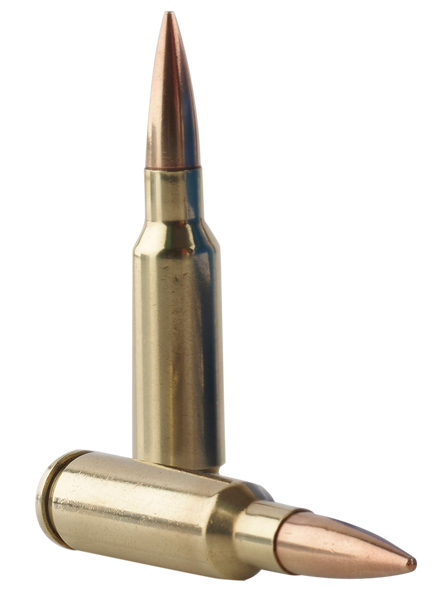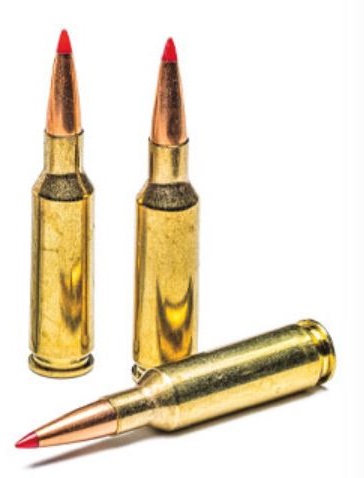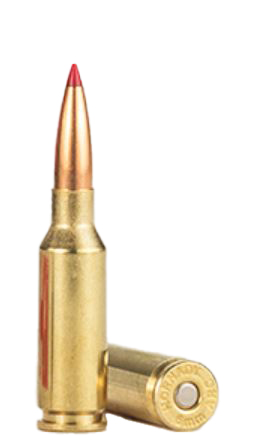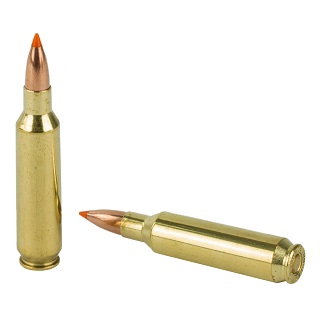The Best Long-Range AR-15 Calibers in 2024
Posted by GunBuilders.com on Jun 17th 2024
The AR-15 is truly a "do-it-all" rifle (or pistol, depending on your setup). With the right barrel, gas system, and receivers, you can effectively chamber any modern rifle cartridge. That's good news, too -- the AR's family of calibers has grown dramatically, with many focusing on long-distance accuracy.
So, which long-range AR calibers are the best? Let's compare.
Best Long-Range AR Cartridges
If there's one thing everyone wants to do with a small, lightweight rifle, it's shooting farther. With the long-range calibers available today, you can easily touch steel at 700 to 800 yards, or even 1,000 yards with the AR-15. These are the loads that can get the job done:
6.5 Grendel

Specifications
- Bullet Diameter: 0.264" (6.7mm)
- Case Length: 1.52" (38.6mm)
- Overall Length: 2.26" (57.5mm)
- Case Capacity: 35 gr. H20
- Max Pressure: 52,000 PSI
- Optimal Twist Rate: 1:8 or 1:9
- Common Weights: 90 - 130 grains
- Muzzle Velocity: 2,880 FPS (90-grain), 2,510 FPS (130-grain)
Among an ever-growing crowd of 6mm cartridges, the 6.5 Grendel remains one of the most popular long-range AR rounds. Developed as an improvement over the 6mm PPC, the Grendel can easily group a 12" target at 800 yards with an out-of-the-box semiautomatic action.
That's largely thanks to its high ballistic coefficients. Hornady's 123-grain A-MAX projectile achieves a .510 BC, while the 123-grain Scenar from Lapua manages a laser-accurate .547 BC.
The 6.5 Grendel excels as a long-range AR round for one major reason: Although its optimal velocity is achieved with a 24" barrel, the Grendel loses just 6% of that velocity when fired in a 16" barrel. In other words, you can build the most compact rifle possible without sacrificing any meaningful loss in speed and accuracy.
Coupled with the fact the Grendel uses standard AR mags (with a 26-round capacity) and bolt carriers, this 6.5mm cartridge is arguably the easiest and most effective way to transform a standard AR-15 into a rifle that can effortlessly touch targets at 800 yards and beyond.
So, why pick 6.5 Grendel?
The 6.5 Grendel makes a short-action alternative to the .308 Winchester. It's perfect for shooters who want AR-10 performance and power in the smaller AR-15 platform. You'll also enjoy roughly half the felt recoil of .308, with comparable bullet drop (about 414" for the 12-grain Grendel, and 407" for the 175-grain .308) at 1,000 yards.
.224 Valkyrie

Specifications
- Bullet Diameter: 0.224 (5.7mm)
- Case Length: 1.60" (41mm)
- Overall Length: 2.26" (57.4mm)
- Case Capacity: 34.5 gr. H20
- Max Pressure: 58,740 PSI
- Optimal Twist Rate: 1:7
- Common Weights: 60 - 90 grains
- Muzzle Velocity: 3,460 FPS (60-grain), 2,638 FPS (90-grain)
What do you get when you push the .22-caliber bullet originally chambered in the AR-15 to its absolute limit? The .224 Valkyrie is the answer to that question. Sprinting out of the muzzle at nearly 3,500 feet per second, it's one of the fastest centerfire rifle rounds on the market today.
Like the 6.5 Grendel, .224 Valkyrie provides all the conveniences you'd want in converting (or building) an AR-15 that chambers such a round: It'll work well enough with existent .223 magazines. It uses the same bolt carrier and, most importantly, it retains significant velocity when it's fired through a shorter barrel.
Although Valkyrie can gain velocity from a barrel as long as 28", it only loses about 8% to 10% of that speed when chambered in a 16" barrel. That makes the Valkyrie an ideal candidate for those who want an AR-15 that can sling the fastest lead on the market, in the pursuit of making accurate kilometer shots.
Why pick the .224 Valkyrie?
There are currently no other short-action rounds that fit in the AR-15 that can even come close to the max effective range of the Valkyrie. With its insane velocity and ultra-flat trajectory, the Valkyrie accomplishes what most long-action and magnum rifle cartridges afford -- minus all the barrel length, weight, and excessive recoil.
6mm ARC

Specifications
- Bullet Diameter: 0.243" (6.2mm)
- Case Length: 1.49" (37.9mm)
- Overall Length: 2.26" (57.4mm)
- Case Capacity: 34.0 gr. H20
- Max Pressure: 52,000 PSI
- Optimal Twist Rate: 1:7
- Common Weights: 80 - 108 grains
- Muzzle Velocity: 3,020 FPS (80-grain), 2,750 FPS (108-grain)
The 6mm ARC (Advanced Rifle Cartridge) nestles neatly between the small, fast .224 Valkyrie, and the larger, slower 6.5 Grendel. Even chambered in a short 16" barrel, the ARC manages to produce more than 2,300 FPS at the muzzle with its heaviest loads, affording high accuracy at distance with relatively little drop.
The 6mm ARC fits nearly in AR mags, too, topping out with a 25-round capacity and providing reliable feeding with factory 5.56/.223 springs and followers. You also get away with using the same bolt carrier, replacing only the bolt itself to accept the wider casing.
Why pick the 6mm ARC?
Those who want the most range possible out of their AR-15 may not like the .224 Valkyrie for its relatively short barrel life, high chamber pressures, and high cost per round. The alternative, for most, is the 6mm ARC. The ARC can easily ring steel at 1,000 yards, with comparatively low bullet drop, and it provides impressive velocities. But it's far more popular, reliable, and affordable than Valkyrie, while providing more range and less drop than 6.5 Grendel.
.22 Nosler

Specifications
- Bullet Diameter: .224 (5.7mm)
- Case Length: 1.76" (44.7mm)
- Overall Length: 2.26" (57.4mm)
- Case Capacity: 34.2 gr H2O
- Max Pressure: 55,000 PSI
- Optimal Twist Rate: 1:8
- Common Weights: 55 - 85 grains
- Muzzle Velocity: 3,450 FPS (55-grain), 2,750 FPS (85-grain)
With all the .264 and .243 cartridges being jammed into the AR's action, you'd think the humble .22 bullet has been superseded -- and you'd be wrong. The .22 Nosler is, in fact, one of the most convenient ways to boost your AR's performance significantly.
With velocities comparable to that of .224 Valkyrie, the .22 Nosler provides some of the best long-range accuracy of any AR caliber. Yet, unlike the Valkyrie, there's no need to even swap bolts. The Nosler uses the AR's original bolt carrier and bolt face and, in most cases, you needn't swap out your existing gas system.
Why pick the .22 Nosler?
With little more than a barrel swap, you'll be able to sling .22 Nosler downrange, enjoying reliable accuracy at 1,000 yards. Given the Nosler casing's similar dimensions to that of 5.56 NATO and .223 Remington, it feeds and chambers more reliably with standard AR mags than any other long-range cartridges the AR-15 receivers currently accept.
Ready to build or upgrade your AR for long-range shooting?
Read our step-by-step guide on how to build your new upper, including how to install your barrel, torque your barrel nut, and set up your gas system!
DISCLAIMER: If you are new to the world of DIY gun building, you likely have a lot of questions and rightfully so. It’s an area that has a lot of questions that, without the correct answers, could have some serious implications. At GunBuilders.com, we are by no means providing this content on our website to serve as legal advice or legal counsel. We encourage each and every builder to perform their own research around their respective State laws as well as educating themselves on the Federal laws. When performing your own research, please be sure that you are getting your information from a reliable source.

